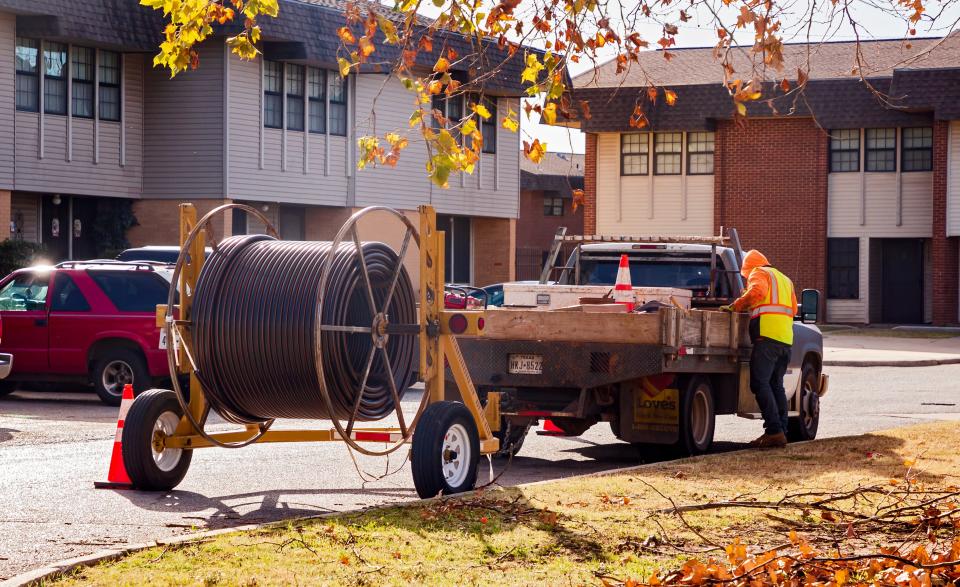As Oklahoma seeks universal internet connectivity, Gov. Stitt says 'affordability' is key piece
As the state embarks on an ambitious plan to achieve near-universal high-speed internet, reversing Oklahoma's current status as one of the least connected states in the nation, keeping internet prices affordable for all Oklahomans will be a critical component, Gov. Kevin Stitt said.
“The taxpayers (are going to) put that in the ground for (companies) so they won’t have to overcharge,” Stitt said this past week, referring to the use of nearly $1.5 billion in federal government funds to build new internet lines. “That's why it's really important that we hold all those providers accountable so when all this is done it's affordable to people.”

Oklahoma ranks 43rd with 87.8% of its population living in an area served by 25 megabits per second, the current broadband benchmark used by the Federal Communications Commission, which tracks connectivity by state. In rural communities, just 71.8% of Oklahoma is served by 25 Mbps, although many believe the standard should be increased to 100 Mbps based on modern internet usage.
Fewer than one in 10 households have reliable broadband service in many rural counties.
The progress toward implementing statewide internet service was highlighted last week as state and federal telecommunications officials gathered in Oklahoma City for a daylong conference co-hosted by the National Telecommunications and Information Administration.
April McClain-Delaney, deputy assistant secretary of communications with the U.S. Department of Commerce, attended the conference and said the federal government offers some subsidy programs to help low-income Americans access the internet.
But she also encouraged states to ensure companies that are awarded contracts to use the new lines include programs for low-income users.
"Individual states within their own competitive programs have the ability to put affordability into that bidding process," McClain-Delaney said.
Officials believe enough money is there to complete the broadband plan
While logistical hurdles remain, including possible supply chain issues that could make accessing fiber-optic cables and other equipment challenging, officials don't see money as an issue.
"By the time you add everything up … we are somewhere just south of $1.5 billion, and we can build out almost an entire state with that," said Mike Fina, chairman of the Oklahoma Broadband Governing Board.
The state is accessing a majority of its funding from the American Rescue Plan Act and the Infrastructure Investment and Jobs Act.
The recent conference included the announcement of nearly $6 million also coming to the state through a federal "Internet for All" grant program, which is being used to help expand broadband access.
More:Broadband expansion slow-moving, but 'generational change' is coming
The state will look first to build new fiber lines, but at some point, it might have to consider fixed wireless or other systems.
"We are just not going to be able to get fiber to every part of the state," Fina said.
But any new internet system that is used will have to meet high-speed standards that represent a significant increase from what is considered average today, Fina said.
State officials are in the process of verifying internet needs and have asked Oklahomans to use an interactive map to verify their internet speeds.
More:Map accuracy key to acquiring needed broadband upgrade dollars, Oklahoma leaders say
“We have reason to believe that some of the information listed on the site, especially in rural areas, is not accurate,” said Kirk Martin, interim director of the Oklahoma Broadband Office. “In many cases, the map lists service that is simply not available.”
This article originally appeared on Oklahoman: 'Affordability' critical as Oklahoma expands internet across state

